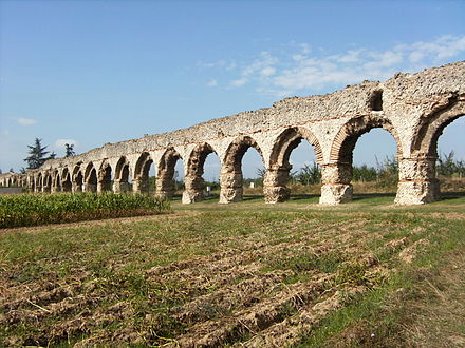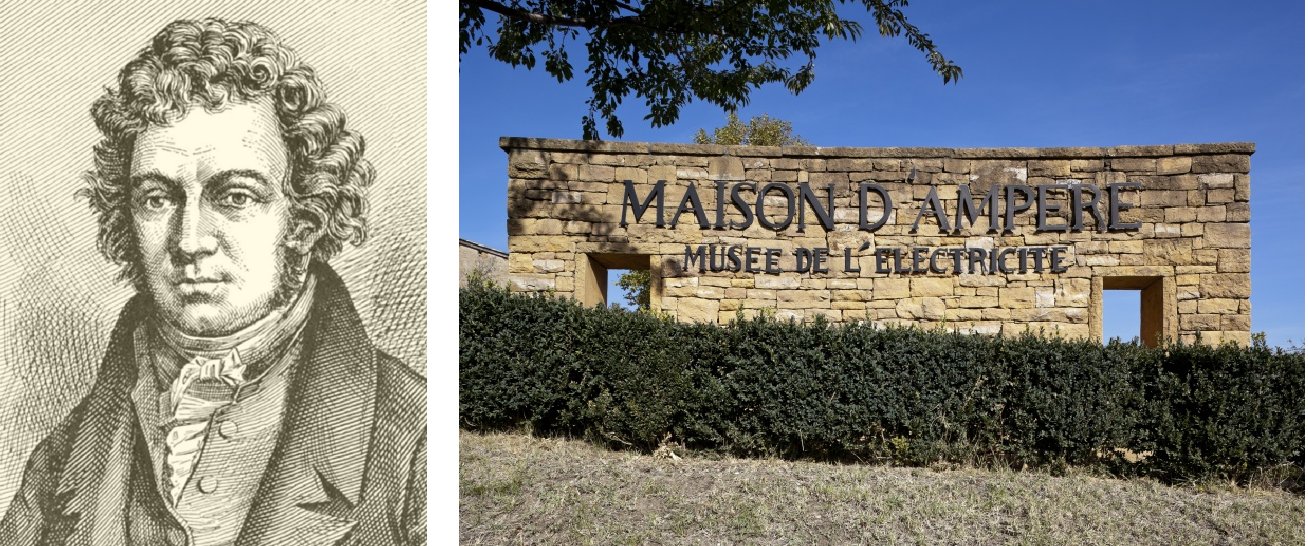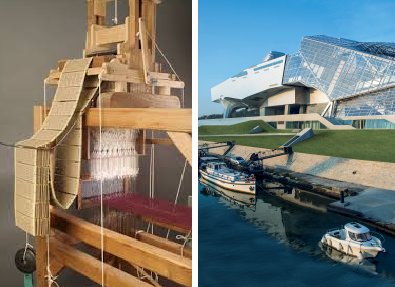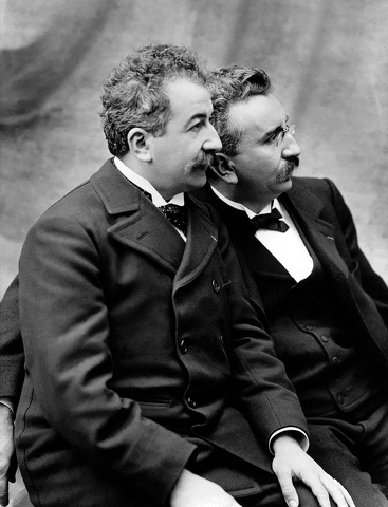Historical Highlights of Science in Lyon
A FEW SCIENTIFIC AND TECHNICAL HIGHLIGHTS FROM THE HISTORY OF LYON
|
| As will be amply illustrated during STATPHYS26, statistical physics today enjoys a broad range of applications, finding interfaces, not only with other domains of physics such as condensed matter or hydrodynamics, but also with other disciplines, particularly mathematics, biology and chemistry and more recently with economics and social sciences. |
 |
In this context, it is worth highlighting a few scientific and technical breakthroughs realized in Lyon during its history, which will hopefully stimulate the curiosity of many of the conference participants. These discoveries and inventions show that, while breakthroughs in fundamental research often lead to useful applications, the reverse is equally true; that technical developments very often improve our scientific knowledge, before any deep understanding of the underlying theories has been developed. The subsequent selection of course is arbitrary, but we hope that by emphasizing a few points it will help participants to have both an instructive and an enjoyable stay in Lyon.
Soon after the foundation of Lugdunum in 43 bc., the Romans began the construction of an impressive network of aqueducts for supplying the city with water. The longest and most technically advanced of which was the Gier aqueduct with a length of 86 kms, bringing water from the source of river Gier to Fourvière, the hill overlooking the centre of the city, called at that time the hill of god Lug. The aqueduct had a mean slope of 1 metre per kilometer, with water flowing at a speed of the order of 1 meter per second, giving a flow rate of around 15 000 cubic meters per day. The engineers had to deal with many problems set by the topographic constraints and obstacles along the route. They constructed 11 tunnels, 30 bridges, and in particular, four macroscopic siphons, which constituted a considerable technological and scientific breakthrough at that time. A siphon allows water to cross valleys, up to one hundred meters in depth, through water pipes made with lead. The pressure drop due to dissipation was relatively small, leading to only a few meters difference in height between the two tanks upstream and downstream from the siphon. The pressure inside the water pipes could exceed ten atmospheres at the lowest point of the longest siphon. In order to resist to the induced stress, the engineers divided the flow into several water pipes with diameters no larger than 27 cm. The water supply system of Lugdunum was considered the most important after Rome itself in the Roman empire. Nowadays, one can admire various well-conserved parts of the Gier aqueduct, in particular in Chaponost and Sainte Foy-Lès-Lyon, and discover many other features of life in Roman times at the Musée Gallo-romain of Fourvières. (http://www.musees-gallo-romains.com/en) and the Musée Gallo-romain de Saint Romain en Gal (http://www.musees-gallo-romains.com/en/saint_romain_en_gal/archelogical_site).
|
| André-Marie Ampère, who was born in Lyon in 1775, is one of the great historical figures in physics. He is of course well-known for his remarkable contributions to electrodynamics, but his first scientific works were dedicated to other topics. When he was a boy, he showed a great passion for mathematics, writing a treatise on conical sections. In 1802, he published a book, Considérations sur la théorie mathématique du jeu, where he proved, using probability theory that non-stop gambling always leads to ruin! |
 |
| In addition to this use of probabilities, a central concept in statistical mechanics, Ampère also assumed the existence of atoms in his work, formulating, in 1814, three years after Avogadro, a form of the ideal gas law stating that different gases with the same numbers of molecules/atoms should occupy the same volume within the same conditions of pressure and temperature. However, the violent controversy within the scientific community concerning atomism discouraged Ampère from publicising his predictions. Of course it took almost another century and the statistical physics framework of Boltzmann and Gibbs before these ideas were fully accepted. Ampère's interest in electrodynamics came from an experiment by Oersted, performed at the Académie des Sciences in 1820. This motivated Ampère to perform many experiments himself, in order to understand the nature of the forces between currents and magnets. He proposed that magnetic fields all arise from microscopic currents contrarily to the hypothesis of the existence of magnetic charges inspired from electrostatics. He also showed that parallel current carrying wires attract each other and that a piece of metal can become a permanent magnet after application of a weak magnetic field. Although he had both the necessary mathematical skills and experimental results exposing the relevant physics, he never wrote down the so-called Maxwell-Ampère theorem, the reason being that he was confused by the violation of Newton's action-reaction principle by magnetic forces. The museum La maison d'Ampère in Poleymieux (http://www.amperemusee.fr/) exposes interesting aspects of both his personal life and scientific achievements, including industrial machines and apparatus which are direct applications of his discoveries. |
|
|
| In 1801, Joseph-Marie Jacquard, also born in Lyon in 1752, built an ingenious machine devoted to the automated processing of printed fabrics-his famous “Métier Jacquard”. This development allowed the printing of all kinds of designs and images with remarkable details and rich colours. He combined a printing technique first introduced in 1725 by another Lyon born inventor, Basile Bouchon, with an automation process -“Vaucanson's cylinder”. |

|
This clever technical development contained within it the basis for scientific computing: punch cards for transferring sequences of precise instructions to a working machine. This technique was later used in the conception of the first calculating machine, designed during the 19th century by the mathematician Charles Babbage, who was also inspired by the famous “Pascaline” created by Blaise Pascal in 1642. The more senior participants of STATPHYS26 will certainly remember the 1970s when computing involved typing punch cards which encoded their programs for IBM computers. Nowadays, cards have disappeared in favor of electronic devices but for the nostalgic, stacks of cards can be seen at the new Musée des Confluences (http://www.museedesconfluences.fr/fr/visit-museum) at the southern entrance to the city. The Métier Jacquard can still be seen and discovered at the Maison des Canuts (http://www.maisondescanuts.fr/en/) and one can view masterpieces of printed fabrics at the Musée des Tissus et Musée des Arts Décoratifs (http://www.mtmad.fr/fr/Pages/default.aspx).
|
| |
| Finally, let us end this short presentation with a still more artistic topic, but which also contains some rather nice technical aspects. The Lumière brothers, Auguste and Louis, came to Lyon with their family in 1870 when they were 8 and 6 years old respectively. Their father, who was a wealthy industrialist, encourged them to study the Kinetoscope, a device created in 1891 by Thomas Edison, which projected films inside a small box which could be viewed by one or two people at the most. The Lumière brothers built an apparatus which could both record sequences of photos and project them on a large screen, giving the impression of continuous motion as observed by our eyes in real life! |
 |
| The first projection of a moving picture created with their apparatus was held in 1895 in the Salon Indien in Paris, with an audience of 30 people. This is considered to be the launching of cinema in its modern sense, although this fact is often contested outside France! Curiously, the Lumière brothers were not very optimistic about the commercial future of the cinema, considering it to be no more than an artistic technique. Edison however already anticipated that it would become a pillar of human culture! Over and above the obvious usefulness of animated images for scientific purposes, the participants of STAPHYS26 will enjoy a visit to the Musée Lumière and the Institut Lumière (http://www.institut-lumiere.org/musee/pr%C3%A9sentation/presentation-english.html) which provides some insight into the magic world of early cinema. |
|
|
| The origin of Statphys in Lyon dates back nearly thirty years to the creation of the Physics Laboratory at ENS de Lyon in 1987 (http://www.ens-lyon.fr/PHYSIQUE/accueil?set_language=en&cl=en). Its first director, Jean-Pierre Hansen, together with a small group of physicists were instrumental in developing activities in the field of liquids and water in particular, at the interface between statistical and nonlinear physics. |
 |
| Success and international recognition followed rapidly, as attested by the organization of the First Liquid Matter conference in 1990. The size of the laboratory has dramatically increased over the last 20 years. Today, the spectrum of the LPENSL is extremely broad, including almost all topics listed in STATPHYS26, from signal processing through all interdisciplinary fields to field theory and quantum gravity. Throughout its young history, the LPENSL has benefited from enriching and stimulating collaborations with other laboratories in Lyon, the Unité de Mathématiques Pures et Appliquées de l'ENS de Lyon, the Laboratoire de Mécanique des Fluides et d'Acoustique de l'Ecole Centrale de Lyon, and various laboratories of the University Claude Bernard (Lyon 1) which have been recently unified in the Institut Lumière Matière. Today, these scientific interactions are administered in part, through the Fédération de Recherche André Marie Ampère, which includes a selection of these partners from UCBL and ENSL and others, such as the Institut de Physique Nucléaire de Lyon and the Centre de Recherche Astronomique de Lyon. This rich scientific environment surely contributed to the choice of Lyon as the venue of STATPHYS26, and we hope that it will inspire the participants to find new interesting contacts or collaborators here. |
|

